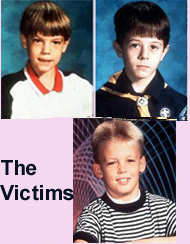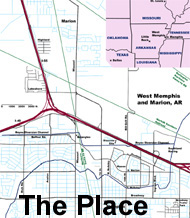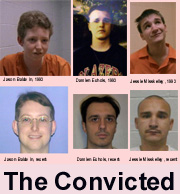
 |
 |
 |
 |
 |
 |
 |
![]()
|
An Analysis of the Door to Door Interviews
Chief Detective Gary Gitchell composed an eleven question survey and sent nine officers out to canvass the neighborhood. The bottom of the survey read, "Make sure all of this information is written down." (BOI, p. 70-71) This didn't happen.
In order to analyze the door to door interviews I divided up the canvassing into categories. Total residences.
Houses listed as vacant. Response categories: No answer. No information beyond name of resident. Short answer. Longer answer. Extended answer. Questionnaire. Notes on the analysis.
Door to Door Canvassing
The Findings. A total of 526 residences were canvassed. This included 180 apartments in the Mayfair buildings and 346 houses. Eleven residences were listed as vacant, six of these in the Mayfair. This is probably an undercount and other vacant residences were listed as no answer or not listed at all. A total of 124 residences were "no answer." The police had "no response" lists, those houses that failed to answer with the initial pass. These doors were knocked on again, reducing the no answer rate. Other residencies were only queried once. 164 residencies were visited at least twice, usually because there was no answer the first time. Including all visits, 201 residences were listed as no answer. This number was reduced with repeat visiting. For 242 residences, no information was given. One reason could be because they had no information to add. However, this was not always the case. Often the amount of the information given depended on the officer - this can't be stressed enough. One officer would fill out a lot of information for a particular household, even information that was likely irrelevant. Another officer would give "no info" as the response to almost all of houses visited. The problems with this approach becomes apparent when the same house were sampled more than once. Sometimes one officer would say "no info" or even "vacant" and another officer would get a potentially vital bit of information or even fill out the entire questionnaire. On one pass Danny Laird was listed as "no info" on another he cited Mark Byers as a suspect and passed on the information that Mark Byers desired to have Chris adopted - a potentially significant bit of information whether it is correct or not. Sixty eight houses gave brief answers and another 17 gave longer answers. The questionnaire was filled out on sixty houses, just under a twelve per cent rate. Another four residences had extended answers as long as what one might expect on the questionnaire. Probably related to the officer, but the best canvassed street was Proctor with questionnaires filled out for 10/13 houses. Second was Ferguson with 11/15. Worst was Mayfair North with 44 no answers and 43 no information out of 100 residences. |
![]()
|
Copyright © 2008 Martin David Hill
|